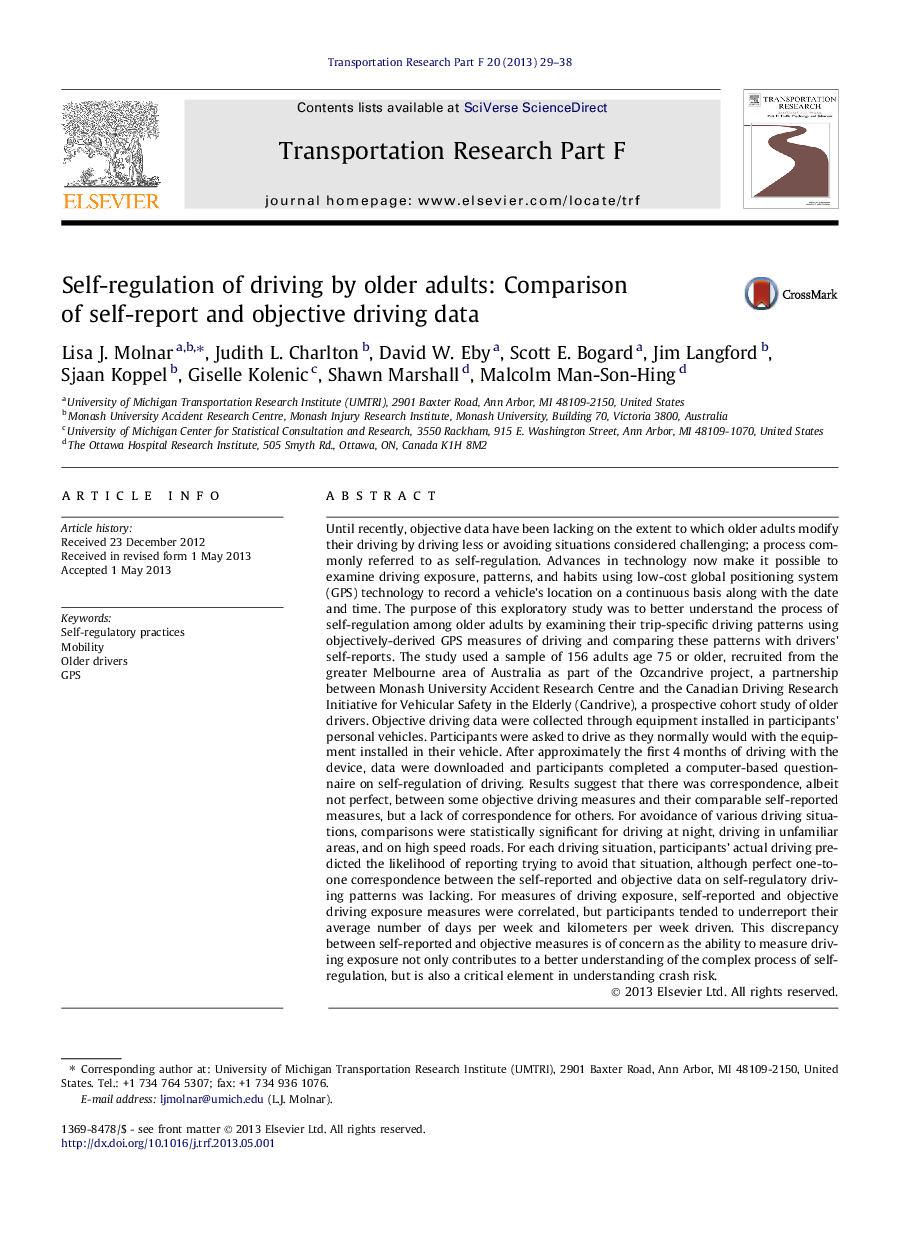| کد مقاله | کد نشریه | سال انتشار | مقاله انگلیسی | نسخه تمام متن |
|---|---|---|---|---|
| 897788 | 1472460 | 2013 | 10 صفحه PDF | دانلود رایگان |

• Self-regulation often refers to avoiding driving situations considered challenging.
• Until recently, objective data have been lacking on older adult self-regulation.
• This study compared objective driving data with self-reports of self-regulation.
• Results suggest correspondence between some measures but not others.
Until recently, objective data have been lacking on the extent to which older adults modify their driving by driving less or avoiding situations considered challenging; a process commonly referred to as self-regulation. Advances in technology now make it possible to examine driving exposure, patterns, and habits using low-cost global positioning system (GPS) technology to record a vehicle’s location on a continuous basis along with the date and time. The purpose of this exploratory study was to better understand the process of self-regulation among older adults by examining their trip-specific driving patterns using objectively-derived GPS measures of driving and comparing these patterns with drivers’ self-reports. The study used a sample of 156 adults age 75 or older, recruited from the greater Melbourne area of Australia as part of the Ozcandrive project, a partnership between Monash University Accident Research Centre and the Canadian Driving Research Initiative for Vehicular Safety in the Elderly (Candrive), a prospective cohort study of older drivers. Objective driving data were collected through equipment installed in participants’ personal vehicles. Participants were asked to drive as they normally would with the equipment installed in their vehicle. After approximately the first 4 months of driving with the device, data were downloaded and participants completed a computer-based questionnaire on self-regulation of driving. Results suggest that there was correspondence, albeit not perfect, between some objective driving measures and their comparable self-reported measures, but a lack of correspondence for others. For avoidance of various driving situations, comparisons were statistically significant for driving at night, driving in unfamiliar areas, and on high speed roads. For each driving situation, participants’ actual driving predicted the likelihood of reporting trying to avoid that situation, although perfect one-to-one correspondence between the self-reported and objective data on self-regulatory driving patterns was lacking. For measures of driving exposure, self-reported and objective driving exposure measures were correlated, but participants tended to underreport their average number of days per week and kilometers per week driven. This discrepancy between self-reported and objective measures is of concern as the ability to measure driving exposure not only contributes to a better understanding of the complex process of self-regulation, but is also a critical element in understanding crash risk.
Journal: Transportation Research Part F: Traffic Psychology and Behaviour - Volume 20, September 2013, Pages 29–38